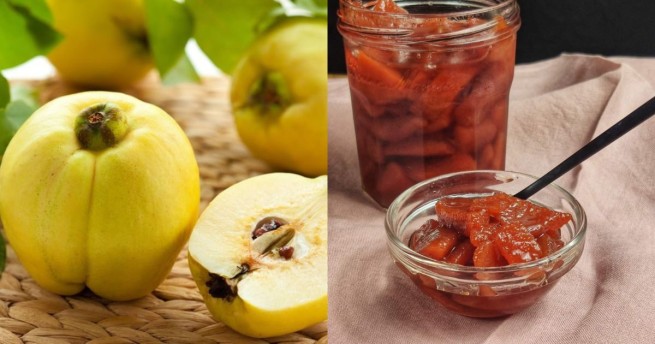Resembling in appearance a cross between an apple and a pear, quince is an oriental fruit, mainly growing in Central Asia, Iran, the Caucasus and Greece.
The Hellenes considered it a symbol of love and fertility
According to legend, it was the quince (κυδώνι) that Paris presented to Aphrodite, and since then one of its names has been assigned to this fruit – “golden apple”.
The name “”κυδώνι” comes from Kydonia, a city on the northwestern coast of Crete, on the site where today the city of Chania is built. Kydonia was inhabited in the Neolithic era and, according to mythology, was founded by King Kydon. Kydon probably comes from either the noun kydos (glory), or from the verb kydanos (to boast).
The golden apples of the Hesperides (mentioned in the 12th labor of Hercules) were quinces. According to mythology, the task given by Eurystheus to Hercules was to go to the garden of Hesperidon and bring him golden apples.
In addition, presumably the “apple of discord” given to Aphrodite was a quince.

Benefit
Quince is a real storehouse of nutrients and vitamins. It contains vitamins A, B, C, E and PP, iron, fiber, calcium, pectin compounds, antioxidants, other substances and microelements. Quince pectins normalize digestion, but their most valuable property is the ability remove accumulated radionuclides from the body. In addition, due to the high iron content in quince, its fruits are often used as a remedy in the fight against anemia. In addition, quince has astringent, antiseptic and hemostatic properties.
Quince is used in folk medicine as an anti-inflammatory agent due to its high antioxidant content. Doctors recommend including this fruit in your diet during periods of seasonal diseases. There are also studies that confirm that quince can destroy parasites in the body and prevent their reproduction; In addition, it improves a person’s well-being in case of poisoning, thanks to its ability to reduce intoxication in the body. Is natural fat burner, thanks to the high concentration of ascorbic acid. The fruit promotes natural fat burning, and its low calorie content prevents unwanted weight gain when you include this fruit in your diet.
Nutritional value of 100 g of fresh quince:
- Calorie content 57kcal
- Carbohydrates 15.3 g
- Fiber 1.9 g
- Proteins 0.4 g
- Vitamin C 15 mg
- Omega-6 fatty acids 49 mg
- Calcium 11 mg
- Magnesium 8 mg
- Potassium 197 mg
- Phosphorus 17 mg.
Everyone recognizes the pleasant aroma and beneficial properties of quince. But its taste does not cause much delight due to increased acidity and astringency. But from the original fruits they make jam, known for its amazing taste and delightful aroma, and other sweets (marmalade, jelly, jam, candied fruits), and compotes are made.
Who should exclude quince from their diet?
Attention! Quince seeds contain amygdalin, which, under the influence of digestive enzymes and stomach acid, turns into poison (of course, if you consume a large amount of quince seeds). However, for this reason, nursing mothers are advised to avoid consuming both fresh quince and products made from it – jam and sweets.
In addition, fresh quince can be irritating to the vocal cords and larynx. This can cause a sharp sore throat and a prolonged cough, so it is not recommended to eat quince before public speaking. Also, the fruits can cause some problems (spasms, colic) in people with chronic gastrointestinal diseases – peptic ulcers, enterocolitis.
It is recommended to rinse your mouth with water after eating quince to remove excess acid from your teeth. Accordingly, the fruit should not be eaten by those who already have problems with enamel.
How to choose
First of all, you should carefully examine the fruit. High-quality quince has a flat and smooth surface, without stains, cracks, dents and other visible defects, and a bright yellow skin. The fruit itself is large or medium in size (small quinces are sour, but dry in structure). The right fruit can be stored in the refrigerator for up to four months (in the fruit and vegetable compartment).







More Stories
A dog with bat ears that costs more than 100,000 euros
Easter: 14 tips for the festive table
GMO Breakthrough: Pork Flavored Soybeans